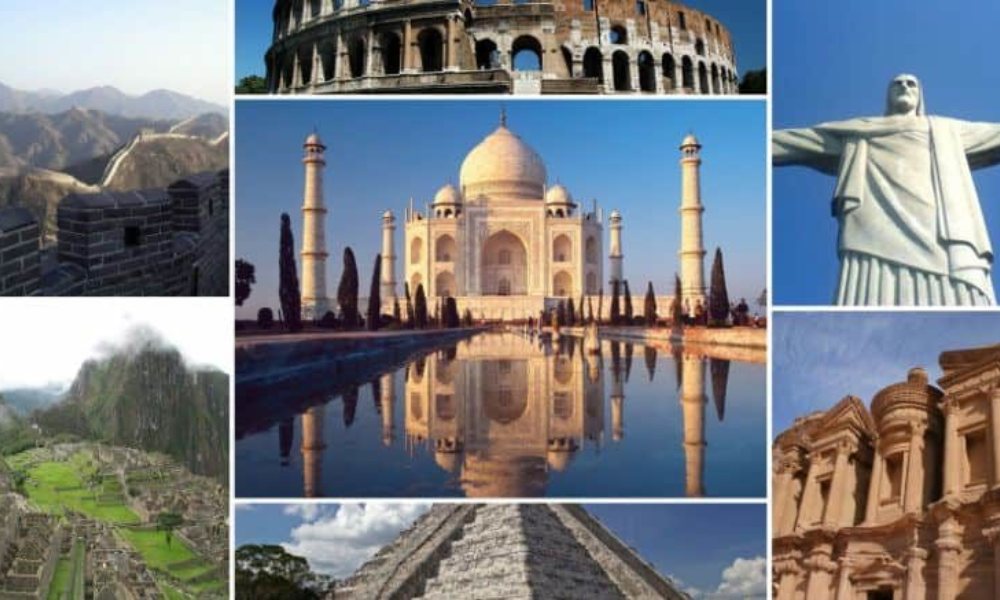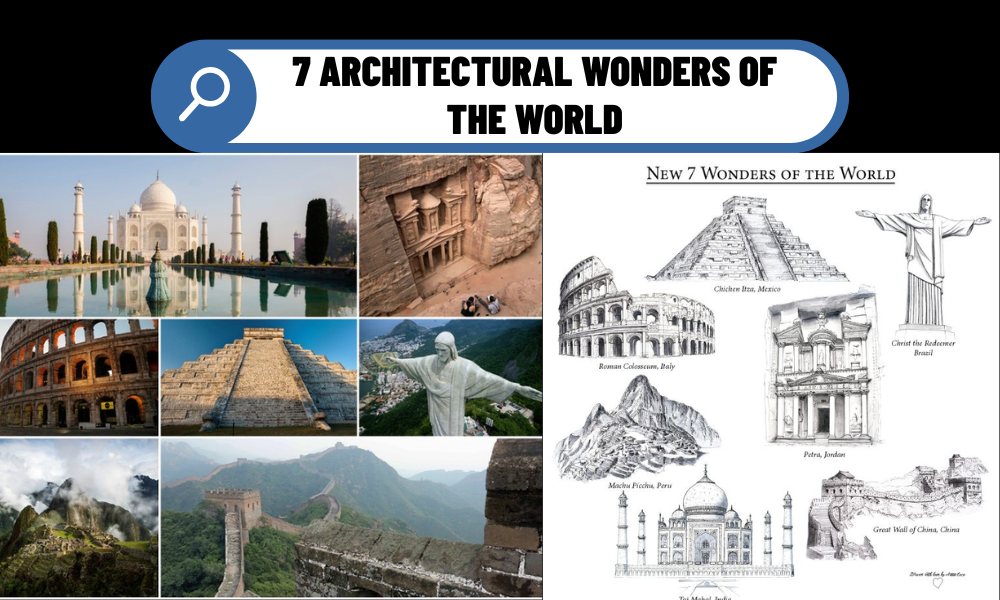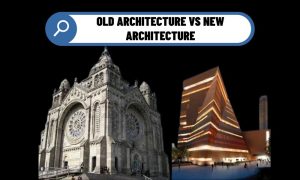From towering pyramids built thousands of years ago to modern skyscrapers that define today’s skylines, architecture has always been a mirror of human ambition, innovation, and culture. These 7 architectural wonders of the world stand as testaments to what humanity can achieve when art, science, and purpose meet.
Whether you’re a traveler, a student of design, or a digital architect building the next virtual city in the metaverse, understanding these iconic structures provides deep insight into the evolution of space and meaning across time.

Top 7 Architectural Wonders of the World
🏛️ 1. The Great Pyramid of Giza – Egypt
Location: Giza Plateau, Egypt
Built: Around 2560 BCE
Type: Ancient funerary architecture
The Great Pyramid of Giza is the oldest and only surviving member of the original Seven Wonders of the Ancient World. Constructed using over 2 million limestone blocks without modern machinery, it demonstrates unmatched precision for its time. Its alignment with celestial bodies also reveals a deep understanding of astronomy and geometry by the ancient Egyptians.
🕌 2. The Taj Mahal – India
Location: Agra, India
Built: 1632–1653
Type: Mughal imperial architecture
A symbol of eternal love, the Taj Mahal is renowned for its perfect symmetry, white marble beauty, and intricate craftsmanship. Commissioned by Emperor Shah Jahan in memory of his wife Mumtaz Mahal, this mausoleum blends Persian, Islamic, and Indian styles, surrounded by lush gardens and reflection pools.
🗿 3. Machu Picchu – Peru
Location: Andes Mountains, Peru
Built: 15th century (Inca Empire)
Type: Ancient mountain city
Hidden in the clouds of the Andes, Machu Picchu showcases the Inca civilization’s architectural mastery and spiritual connection with nature. Built without mortar in a seismic zone, the city’s terraces, temples, and water channels remain perfectly integrated into the mountain landscape.
🏛️ 4. The Colosseum – Italy
Location: Rome, Italy
Built: 70–80 CE
Type: Roman amphitheater
The Colosseum is an icon of Roman engineering and architectural prowess. Capable of seating over 50,000 spectators, it featured retractable roofs, elevators, and trap doors—technologies centuries ahead of their time. Today, it symbolizes the grandeur and complexity of ancient Rome.
🗽 5. The Statue of Liberty – USA
Location: New York City, USA
Built: 1886
Type: Neoclassical sculpture & architecture
A gift from France, the Statue of Liberty is more than a statue—it’s a global symbol of freedom and democracy. Standing 93 meters tall with an iron framework designed by Gustave Eiffel, it combines structural innovation with powerful symbolism.
🏯 6. The Great Wall of China
Location: Northern China
Built: From 7th century BCE to 17th century CE
Type: Military architecture
Spanning over 21,000 kilometers, the Great Wall of China is the longest structure ever built by humans. It winds through mountains, deserts, and plains, featuring watchtowers and barracks along its length. More than a defense system, it’s a symbol of unity and resilience.
🗼 7. The Eiffel Tower – France
Location: Paris, France
Built: 1887–1889
Type: Iron lattice tower (Industrial architecture)
Once the tallest man-made structure on Earth, the Eiffel Tower is a triumph of modern engineering. Originally criticized, it has since become a beloved emblem of innovation and French identity. Its open-frame design revolutionized how we think about structural aesthetics and vertical construction.

What These Wonders Teach Us
These 7 architectural wonders are more than tourist destinations. They represent:
- Cultural identity across time and space
- Technological progress through ancient and modern innovation
- Human creativity, expressed through form, scale, and purpose
In today’s digital world—where architecture is being redefined in the metaverse and through 3D modeling and NFTs—these structures serve as foundational references for virtual design and spatial storytelling.
Whether you walk their corridors in person or replicate them in the digital realm, these architectural wonders remind us of what humanity can build—physically, culturally, and ideologically. In a time when we’re reshaping space through technology, their legacy offers inspiration, guidance, and awe.














